Want to learn how to make your own syndet shampoo bar? In this post I am going to go way in depth about how to make and use your own shampoo bar. The thing that I love about the syndet shampoo bars are how long they last in the shower. Well, that and the ridiculous amount of bubbles!
Table of Contents
Prefer to watch this instead of reading it?
Shampoo Bar without lye
You might be wondering, how you can make soap without lye. Here’s the thing, technically these are not a soap. They are made with surfactants. For more information on surfactants, check out my Surfactants Explained post.
You might be wondering, ok so why don’t you just make a “soap” with lye for your hair. It’s just not going to work. And here is why, the Ph is going to be way too high on any soap you make with lye. Using an unbalanced Ph can actually damage your hair (I explain more a little later in this post).
What are shampoo bars?
Remember, technically shampoo bars are not a soap. Rather they are often referred to as ‘Syndet’ bars. The name syndet actually comes from a combination of SYNthetic and DETergent. Which sounds scary, but really it’s not when you dig a little deeper.
Most bars of soap that are in the store are not by definition ‘soap’. Think about when the companies call them ‘beauty bars’ or ‘soap free’. Which, is not necessarily a bad thing it’s just sort of confusing. In this recipe, I have selected super mild and non-irritating surfactants.
How to use a shampoo bar
Using a shampoo bar, is just something you have to get used to. After using liquid shampoo forever, it can feel sort of strange switching to a bar. To use your bar, rub it between your hands to create a lather. You could also rub it directly on your hair if you prefer. Just do some trial and error with your shampoo bar and see which way works best for you. Then, massage into hair and scalp and then rinse.
Storage
You want to be sure that you aren’t leaving your bar in water in between uses. Store it somewhere dry with drainage for best results. I just pop mine on my draining soap rack.
Benefits of using a shampoo bar
- No plastic waste
- Easy to travel with
- Condensed bar lasts longer
- Hard Water
It’s weird how we automatically associate bubbles with cleaning. Like, this shampoo isn’t getting all bubbly so it must not be cleaning. Truth be told, hair does not require a lot of later to be cleaned. None the less, we have come to enjoy these bubbles.
The difference between hard and soft water, is that hard water has more minerals in it. The more minerals in the water, the harder it is. You might be wondering what this has to do with shampoo. EVERYTHING! If you have soft water, you can pretty much use any shampoo that you want. However, those with hard water know the struggle.
Hard water actually requires that you use more soap, shampoo, detergents, etc., because the minerals are decreasing the soaps ability to lather. Thus, I have chosen surfactants that perform well in hard water (explained more below).
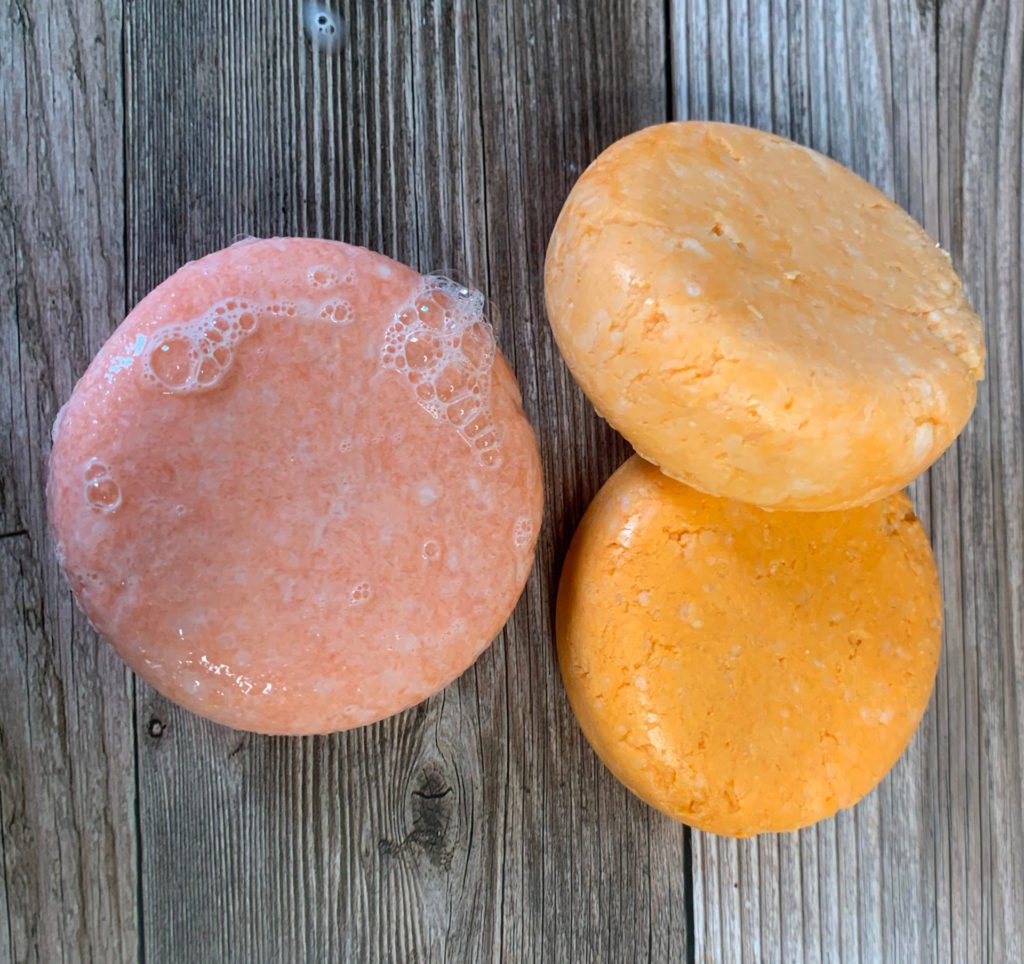
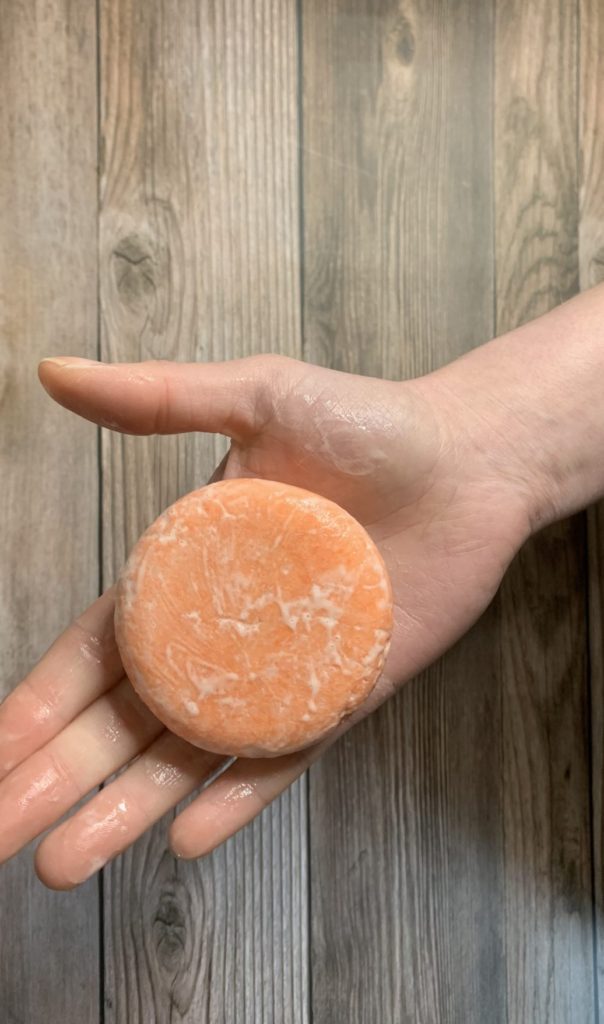
Ph
Just as a quick overview, the Ph scale range is from 0-14. With 7 being the neutral spot (water). Anything below 7 on the scale is going to be more acidic and the higher numbers are more alkaline. More in depth on Ph can be found in my How to make products with a balanced Ph post.
Ok, so you are probably wondering why this matters
Hair is made up of tiny little cuticles, which look like scales. When you use products that are more alkaline, these cuticles open up and expose the inside of your hair shaft. Using more acidic products, these cuticles close. When the cuticles are closed, your hair is strong and shiny.
So we need to be using a acidic product to keep our hair cuticles closed. The Ph range that we are going for with this bar is between 4 – 5.5.
Alkaline products can cause:
- Cuticle damage
- Frizz
- Irritation
- Hair breakage
Balanced Ph
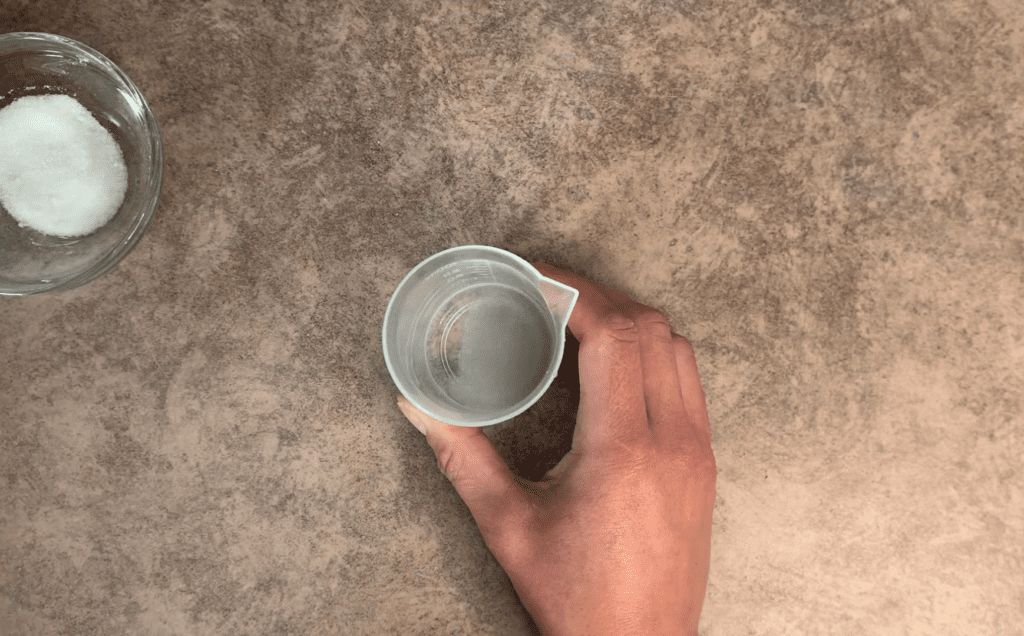
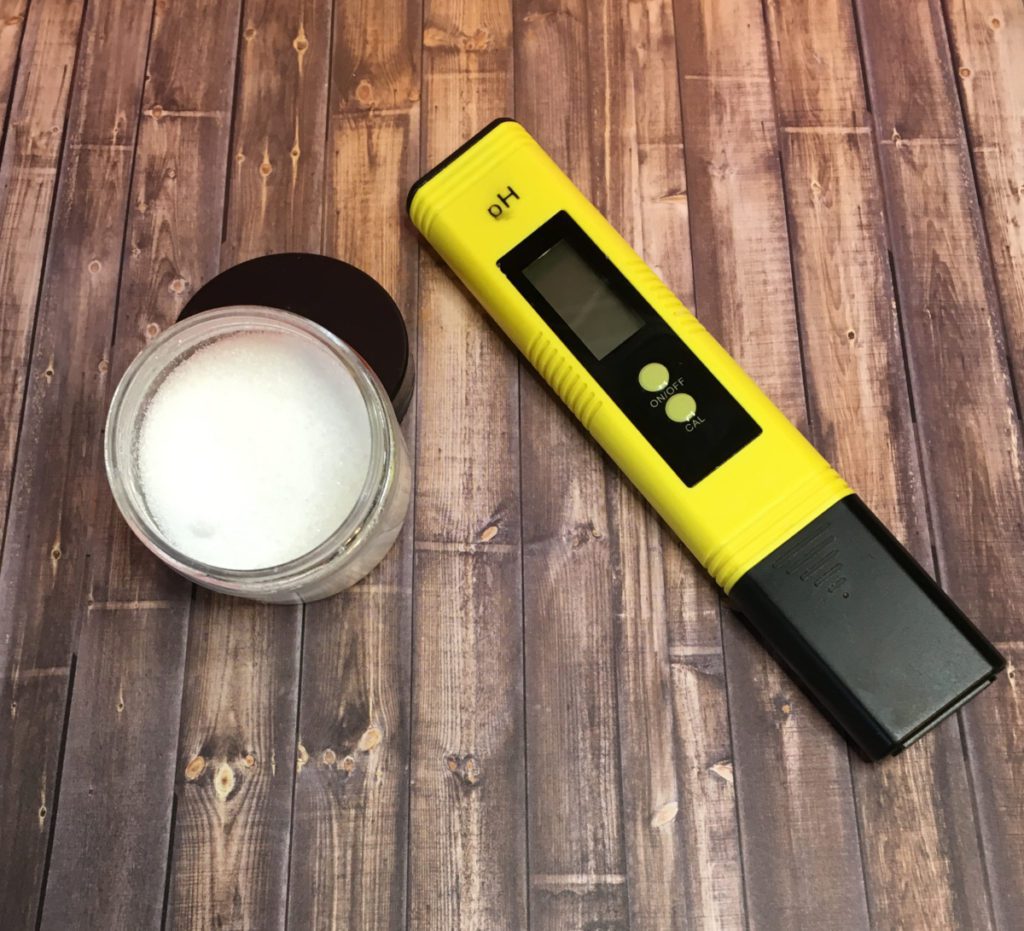
I have made this formula with a balanced pH, but if you need to adjust the pH down you can do so with citric acid. Simply dissolve the citric acid in distilled water and add a very small amount to your bars at a time. Just a few drops will make a difference. I make a citric acid solution, which is 50% water and 50% citric acid.
Click here to learn how to make the 50% Citric Acid Solution
No Preservative
There is no need to add a preservative to your shampoo bar. Since there is not any water in our shampoo bar, it does not require a preservative. And, although it is going to get wet in the shower it is going to be dried out again. If you feel better adding a preservative you definitely can, I just feel that it is not necessary.
Ingredients
Surfactants
Oh how I love using surfactants! I find it so cool that surfactants grab ahold of dirt and oil, like they are little emulsifiers or something. They have a hydrophilic (water loving head) and a hydrophobic (water fearing) tail. This means that they surfactant grabs onto the water with their head and dirt/oil with its tail. Allowing the dirt and oil to be washed down the drain with the water.
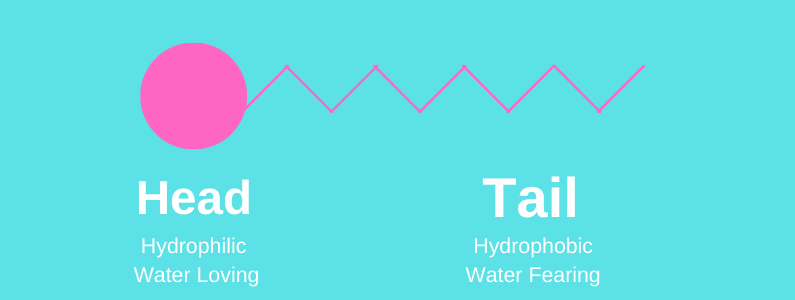
Sodium Cocoyl Isethionate SCI
SCI is a very gentle surfactant that is often used in baby products. SCI is a pretty mild surfactant that does not irritate our scalp. I am in love with the creamy dense bubbles that SCI makes. It is a great choice for a shampoo bar, because it does not dry out your hair. Also, it performs well in soft and hard water!!!
Sodium Lauryl Sulfoacetate SLSa
SLSa is a gentle surfactant that comes from coconut and palm oils. It is sulfate-free and has good cleansing properties. SLSA is commonly used to replace SLS, as SLS can be more irritating on our skin. It is an anionic surfactant, that adds a thick lather to the shampoo bar and it works well in hard water.
Cocamidopropyl Betaine CAPB
CAPB is derived from coconut oil. It is gentle enough to be used on our skin, hair and face. It is an amphoteric surfactant, when used in an acidic product it has a positive charge. Meaning that leaves a conditioned feeling even after being rinsed off.
Harden / Thickeners
Sodium Lactate
Sodium lactate is basically a liquid salt that is used to help to harden our shampoo bars. It comes from the fermentation of corn and beet sugars. It is also a wonderful humectant.
Cocoa Butter
When formulating our shampoo bar, we want to maximize bubbles and keep the bar in solid form. Anytime you add oil to a shampoo you are automatically cutting down on the bubbles. Keeping that in mind, we just use a tiny bit. Cocoa butter is a solid butter that has a low melting point that is right around skin temperature.
Ceytl Alcohol
Although cetyl alcohol has ‘alcohol’ in the name, it is not drying to the skin. We normally assume that all alcohols would have a drying effect. In contrast, cetyl alcohol is very hydrating to our skin. It is also a conditioning agent in this shampoo bar.
Specialties / Extras
VegeKeratin
Vegekeratin is a plant based keratin. Although it is not necessary in this formula, I wanted to add it because of all the benefits it brings to our shampoo bar. It is said to increase hair strength, reduce frizzing and makes the hair look shinier. If you don’t have vegekeratin, you can leave this out or swap for keratin.
Pro Vitamin B5
Pro Vitamin B5 is the super hero of this formula, because it helps to keep our hair hydrated. It binds to our hair and helps to really lock in moisture. The interesting thing is that it has been found to be able to penetrate the hair and hydrate the cortex of our hair.
You might be thinking, if it’s the super star lets add more. We want to be careful not to use too much of the B5 as it can cause a buildup overtime. Some things are just best in small quantities.
Mica Powder
I cant help it! I have to color my bars in accordance with their scent.(Plus, orange is my favorite color!) Feel free to use whatever color you fancy or leave it out all together. I just think its more aesthetically pleasing with color.
TIPS
Mask Up!!!!
For real, before you start measuring out surfactants make sure you wear a mask. Some of the powder surfactants are lighter than air and poof right up and into your lungs.
Drying Time
After you make your shampoo bar, be sure to allow it some time to dry and harden up. Granted, you could use it right away, but I have found that allowing a few days to a week really extends the life of your shampoo bar.
Heating the surfactants
When you are heating your surfactants, it is going to test your patience. They take a really long time on a low steady heat to melt them. So, sit back and make a pot of coffee or cup of tea to enjoy while you wait.
DIY Shampoo Bar
Equipment
- Scale
- Heat sage containers
- Double boiler
- Ph meter
- Silicone mold
Ingredients
Heat Phase 2
- 2 grams | 2% Cocoa butter
- 2 grams | 2% Cetyl alcohol
After Heat Phase
- 3.5 grams | 3.5% Sodium lactate
- Citric acid
Cool Down Phase
- 1 gram | 1% Pro Vitamin B5
- 1 gram | 1% Vegekeratin
- 2 grams | 2% Bergamot & Mandarin Fragrance Oil
- Orange mica powder
Instructions
- Weigh out your ingredients. Do not weigh vegekeratin, provitamin b5 or the mica powder.
- Place the SCI,SLSA, and CAPB in a double boiler. (It has to be a double boiler).
- Pop it on the stove. Stir regularly, but it will take a while to melt.
- While the surfactants are heating, make your citric acid mixture. Use 50% water and 50% citric acid. I made 10 grams, but you will not need that much. A little bit goes a long way.
- In a separate heat safe container, add your cocoa butter and cetyl alcohol.
- Pop it on the double boiler.
- When the surfactants have fully melted, pull both containers off the double boiler.
- Place the surfactant mix into a heat safe mixing bowl.
- Add the cocoa butter and cetyl alcohol to the surfactants and mix.
- Add the sodium lactate and mix.
- Check and adjust the Ph level with citric acid mixture.
- Add fragrance oil and mica powder.
- Add the remaining cool down ingredients while on the scale.
- Give the shampoo bar a good mix.
- Firmly press the mixture into your mold. I press the mix to the sides of the mold to make sure there are no gaps.
- Allow to fully cool before removing from the mold.
- Be sure to allow the shampoo bar to dry out for a few days to a week before using.
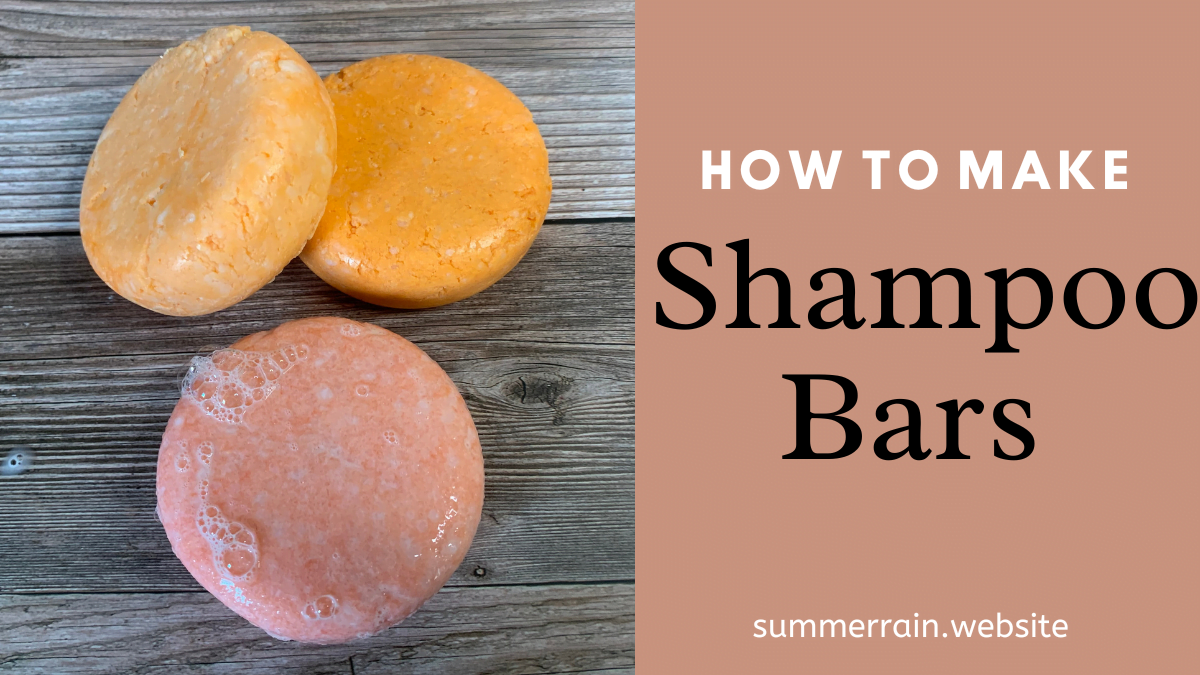
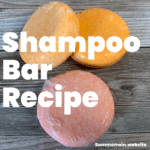
9 thoughts on “How To Make A Shampoo Bar”
I want to make the shampoo bar recipe that you give, but where do I find all of the ingredients? I already make cold pressed soap, but I don’t know where to get the surfactants.
Thank you.
I have use a shampoo bar once as it was gifted and really liked it on my hair. Thank you for this tutorial.
Where would I get all these ingredients? Are they easily available?
SCI https://amzn.to/39gw0KA
SLSA https://amzn.to/3w5q5Sm
CAPB https://amzn.to/39hkD5p
Cocoa Butter https://amzn.to/2PA0O1T
Cetyl alcohol https://amzn.to/39gvtIA
Sodium lactate https://amzn.to/31oO2WI
Citric acid https://amzn.to/3w1DXNv
Pro vitamin B5 https://amzn.to/2Qzmf3K
So did you test the ph of your bar? I was wondering if it came within your target range?
I did have to adjust the pH level in this shampoo bar.
I like the recipe but if i want to make change giw can i do th change?
I like the recipe but if i want to make change how can i do th change?
Hi. DOes sodium lactate still keep the bars hard even after wetting or using in the shower?
Yes, it helps them to stay hard and last longer.
Comments are closed.